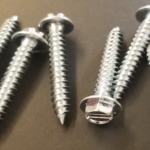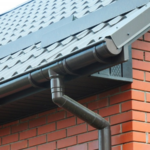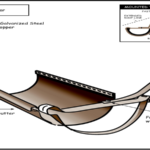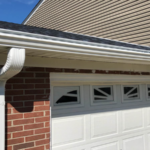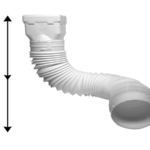Installing box gutters is a relatively simple process, and it is something that most homeowners can do on their own with a little bit of time and effort. However, if you are not comfortable with doing the installation yourself, you can always hire a professional to do it for you. Either way, box gutters are an important part of keeping your home safe from weather damage, so make sure you get them installed as soon as possible.
Are box gutters worth it?
There are a few things to consider when debating whether or not to install box gutters on your home. The first is the cost. Box gutters can be more expensive than traditional gutters, so you’ll need to factor that into your decision. The second is the level of protection they provide. Box gutters do a great job of keeping leaves and other debris out of your gutters, which can help to prevent clogs and water damage. Finally, you’ll need to decide if the extra effort required to maintain box gutters is worth it to you. They do require more frequent cleaning and inspection than traditional gutters, so be sure you’re prepared to put in the extra work before making the decision to install them.
How much fall does a box gutter need?
A box gutter is a type of gutter that is installed on the eaves of a house or building. It is a rectangular box that is open at the top and has a sloping bottom that drains water away from the building. The box gutter is usually made of metal, but can also be made of plastic or other materials.
The amount of fall that a box gutter needs depends on the size of the gutter and the amount of rainfall that the area receives. For a small gutter, a fall of 1 in 50 (2 cm per meter) is adequate. For a large gutter, a fall of 1 in 80 (1.25 cm per meter) is necessary.
The fall of the gutter can be achieved by installing it on a slope or by attaching it to the fascia board at the correct angle. The angle of the gutter should be such that the water flows towards the downpipe and does not pond in the gutter.
If the box gutter is not installed with the correct fall, it will not work properly and will not be able to drain the water away from the building. This can cause the gutters to overflow, which can lead to water damage to the building.
Does a box gutter need an overflow?
A box gutter is a type of gutter that is typically rectangular or square in shape, and is installed at the edge of a roof where rainwater can collect and run off. While most box gutters do not require an overflow, some may have one installed to help prevent water from spilling over the edge of the gutter and onto the roof or ground below.
Do you need a sump in a box gutter?
No, you do not need a sump in a box gutter. However, if you have a lot of leaves and debris in your gutters, it may be a good idea to install one. A sump will help to keep the leaves and debris from clogging up your gutters and causing them to overflow.
What are the disadvantages of box gutters?
There are a few disadvantages of box gutters that should be considered before installation. One is that they can be more difficult to clean than other types of gutters because of their narrow and confined space. This can make it difficult to reach all the nooks and crannies where leaves and debris can collect. If not cleaned regularly, box gutters can become clogged and cause water to back up and overflow, which can lead to damage to the home’s foundation or landscaping.
Another disadvantage of box gutters is that they are not as durable as some other types of gutters, such as seamless gutters. This is because they are made with seams where the different pieces of the gutter system are joined together. These seams can become weak over time and allow water to leak through, which can cause damage to the home.
Finally, box gutters can be more expensive than other types of gutters. This is because they are usually made from more expensive materials, such as copper or aluminum. They can also be more difficult to install, which can add to the overall cost.
How long is a box gutter life expectancy?
A typical box gutter has a lifespan of about 20 years. However, this can vary depending on the material used, the climate, and how well the gutter is maintained. For example, gutters made of aluminum or steel will last longer in areas with mild climates, while those made of plastic or rubber may only last a few years in harsher environments. Proper maintenance, such as regularly cleaning out leaves and debris, can also help extend a gutter’s life.
What is the best way to waterproof box gutters?
There are a few ways to waterproof your box gutters and ensure that they last for years to come. One option is to use a sealant on the gutters themselves. This will create a barrier between the water and the gutters, and will prevent the gutters from rusting or deteriorating over time. Another option is to install a gutter guard system. This will keep leaves and debris from clogging the gutters, and will also prevent water from seeping through.
What is the best material for box gutters?
There are a few different types of materials that can be used for box gutters, but the most common and most popular type of material is aluminum. Aluminum is a strong and durable metal that is resistant to rust and corrosion, and it is also lightweight and easy to work with. Other materials that can be used for box gutters include copper, galvanized steel, and PVC.
Last Word
If you live in an area with severe weather, you know the importance of having a weather-ready home. One way to make your home weather-ready is to install box gutters. Box gutters are designed to channel water away from your home, preventing water damage during storms. They’re also relatively easy to install, so you can do it yourself without hiring a professional.


